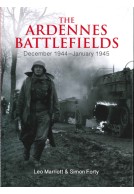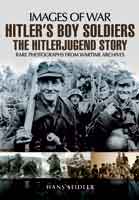Normandy 1944: The Battle of the Hedgerows (Paperback)
Rare Photographs from Wartime Archives
Imprint: Pen & Sword Military
Series: Images of War
Pages: 144
Illustrations: 200
ISBN: 9781526723710
Published: 2nd May 2018
Last Released: 4th July 2024
(click here for international delivery rates)
Need a currency converter? Check XE.com for live rates
| Other formats available | Price |
|---|---|
| Normandy 1944: The Battle of the… eBook (31.3 MB) Add to Basket | £6.99 |
Just as the Anglo-Canadian forces in the east found it difficult to advance beyond Caen after D-Day, so the US First Army laboured to advance through the Norman bocage country in the west. The lethal struggle that developed there was a defining episode in the Normandy campaign, and this photographic history is a vivid introduction to it.
Through a selection of over 150 carefully chosen and meticulously captioned wartime photographs Simon Forty traces the course of the battle and gives the reader a graphic impression of the conditions, the terrain and the experience of the troops.
The Germans mounted a tenacious defence. They fought from prepared positions in the high hedgerows. Each cramped field and narrow lane became a killing ground. But the Americans adapted their tactics and brought in special equipment including bulldozers and tanks with hedgerow cutters to force their way through.
The losses were appalling as the Germans used snipers, mines, machineguns and artillery to great effect. Inexorably, however, and with enormous bravery, First Army solved their tactical problems, inflicted heavy casualties on the defenders and ground their way to Saint-Lô.
A part of the "Images of War" series following the post D-Day efforts of the 1st US Army to capture the Cotentin Peninsular with its important port of Cherbourg, and then the struggle to expand the beachhead southwards, ending with the fall of Saint-Lô and the buildup to Operation Cobra, which finally achieved a decisive break in the German lines. Much of this took place in the notorious bocage areas where the narrow roads and thick, almost impenetrable hedgerows severely restricted the ability of the Americans, and above all their tanks to manoeuvre, and so gave their opponents a considerable advantage. The photographs vividly convey the immense difficulties posed by this terrain and show the typical manner in which the battle was fought, covering a broad range of subjects and units with many different types of vehicles and equipment on display. These include the bulldozer and improvised Rhino tanks; Shermans with teeth welded to the front, both of which were used to great effect to force paths through the hedges.
Pegasus Archive
Read the full review here
As featured by
The Armourer, August 2019
Another addition to the Images of War series from author Simon Forty. This one tackles the topic of the Battle of the Hedgerows, which is largely about the fighting of the American forces on the Western side of the Normandy battlefields, and just one small section looking at the British forces and their experience of engagements amidst the Bocage. With a subject such as the Battle of Normandy in 1944 it is a struggle to find more new photos. So, there are a number of pictures that will be familiar to many who have read other works on the period, but still a high percentage of the images featured in the book were new to me.
Military Model Scene, Robin Buckland
It does well in the aim of indicating what life was like for the combat soldier in Normandy. The confined countryside led to combat at close quarters, and the French villages that were so often devastated by the fighting. Despite heavy casualties on D-Day in the subsequent weeks of fighting, the US troops did learn to adapt to the conditions they found themselves in. A good example was the field modification of adding the so-called Cullin Hedgerow device, prongs welded to the front of a tank to dig into the banks of the hedges, letting the weight of the tank 'push' through it, rather than riding up over the top and thereby exposing the thinly armoured bottom plate to enemy anti-tank weapons.
Following an Introduction, the photos are split onto 7 chapters, each with some explanatory text, maps and well informed captions for the pictures themselves. The chapters cover The Bocage; The Opposing Forces (which includes the US Order of Battle); Advance from Omaha; The Cotentin; The July Offensive; The Battle of St. Lo; while the final chapter looks at British Actions in the Bocage, which does include the famous action in Villers Bocage that involved Michael Wittman. The photos featured in the book cover a good range of different things, from the basic countryside, the troops in the front line and rear areas as well as the various tanks, artillery, and weaponry used by both sides along with the towns and villages and the extensive damage they suffered. The German army managed to delay the allies for many weeks, and proved very able to use the countryside to their best advantage and to inflict heavy casualties, although ultimately they suffered hugely themselves before they had to fall back.
Review featured online here.
As featured 'ON THE SHELF'
Wargames Illustrated, April 2018
About Simon Forty
Simon Forty was educated in Dorset and the north of England before reading history at London University’s School of Slavonic and East European Studies. He has been involved in publishing since the mid-1970s, first as editor and latterly as author.
Son of author and RAC Tank Museum curator George Forty, Simon and his brother Jonathan have continued the family tradition, writing mainly on historical and military subjects including books on Hadrian's Wall, the Napoleonic wars and the two world wars, often in collaboration. Simon's latest book, published by Historic England, is D-Day UK: 100 Locations in Britain; Jonathan's Heavyweights: The Military Use of Massive Weapons. They are also co-authors of Tank Warfare 1939-1945.



























